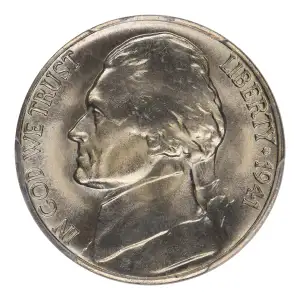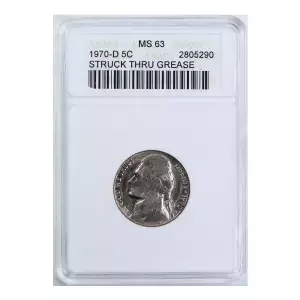Thomas Jefferson was a man of many talents. He is best known as the principal author of the Declaration of Independence and the third president of the United States from 1801 to 1809. Jefferson’s achievements as an architect, statesman, scientist, and philosopher have earned him a lasting legacy as one of the truly great figures in American history. It is no surprise that his likeness eventually appeared on circulating U.S. coinage in 1938 and has continued to do so for over 80 years. The Jefferson nickel was designed by German-American sculptor Felix Schlag, who was awarded a $1,000 prize in April of 1938 when his model was selected among those submitted by 390 contestants. Schlag’s portrait of Jefferson was based on a marble bust by famed French sculptor Jean-Antoine Houdon. The Jefferson nickel features the left-facing president dressed in a coat of the period and wearing a peruke wig. On the reverse is a front elevation of Jefferson’s home, with the name MONTICELLO beneath it. The novelty of the new 1938 nickel caused most examples to be saved by a curious public during its first few years, and the coin was not a familiar sight in circulation until about 1940. Shortly thereafter, the onset of World War II prompted the rationing of many commodities, including nickel, which was highly valued for use in armor plating. Congress ordered the removal of this metal from the five-cent piece, effective October 8, 1942. From that date until the end of 1945, five-cent pieces bore the regular design but were minted from an alloy of silver, copper, and manganese. These emergency coins were to be withdrawn from circulation after the war, so a prominent distinguishing feature was added. Coins from all three mints bore large mint marks above the dome of Monticello, and the letter ‘P’ was used as a mintmark for Philadelphia for the first time. These “war nickels'' proved quite satisfactory in circulation and were not immediately withdrawn. Instead, they remained a familiar sight until the mid-1960s, when rising silver prices caused them to be hoarded for their bullion value. Jefferson nickel production continues today in its original 1938 composition, albeit with several design modifications in recent years to modernize our nation’s coinage.





